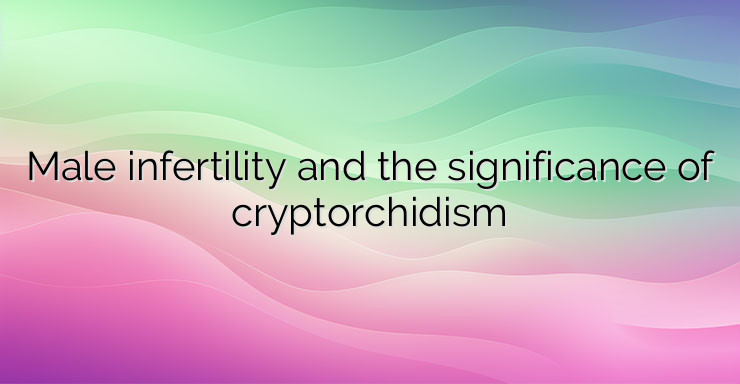Cryptorchidism is the most common abnormality of the male genitalia and occurs in 2-5% of newborns. About 20% of cryptorchid testes are not palpable and are usually located in the abdominal cavity. As the fetus develops, its testicles form in the abdominal cavity and descend into the scrotum immediately before birth. In some cases, this is not observed and the child is born with an empty scrotum because the testicles have not moved to the scrotal sac. Cryptorchidism occurs in about 30% of those born before term and 4% of those born at term. In approximately 50% of cases, the testicles descend spontaneously to their normal location by 6 months after birth. If this does not happen, therapeutic measures are taken to support this process, because if they are left in the abdominal cavity, changes occur in the testicles that affect fertility. In some cases, the testicle descends into the scrotum spontaneously, but in stressful situations it rises high above it. This condition is called a “retractile testicle”. The condition is physiological in men with a more pronounced cremasteric reflex and rarely requires surgical correction. The main danger is related to possible rotation of the testicle and compromising its blood supply. If the testicle does not descend by the sixth month, treatment is started – initially with hormonal preparations. The lower the testicles, the greater the likelihood of effective hormone treatment. The most reliable results are obtained with surgical intervention, by surgical removal of the testicle in the scrotal sac – orchidopexy. Higher body temperature suppresses normal testicular development, which would later impair normal spermatopoiesis and lead to infertility. In the second year, the number of germ cells decreases. Their complete loss is observed in 10-45% of patients. Therefore, early treatment is recommended in order to preserve spermatogenesis, especially in cases of bilateral cryptorchidism. Tumors develop more often in the cryptorchid testicle than in the normal testicle, studies show. The risk of developing a testicular tumor is increased between 3.6-7.4 times compared to the general population. Between 2-6% of men affected by cryptorchidism develop testicular tumors. In some cases, an accompanying hernia is also observed. Surgery for a retained testicle is most often performed between the ages of 18 and 22 months. The operation is called an orchidopexy – the retained testicle is discovered, the spermatic cord is freed and separated from the hernial sac. The testis is then retracted and fixed to the floor of the scrotum in its normal anatomical location. Some authors do not even recommend hormonal treatment, due to the slow onset of the effect and the risk of compromising fertility. The optimal age for operative treatment is a matter of debate. Some authors adhere to the thesis that early treatment (during the first 2 years) has a positive effect on subsequent sperm production. Others considerthat this can also be done at the age of about 3 years. Despite the controversy, the results clearly indicate that early treatment is preferable for proper testicular growth.


Leave a Reply